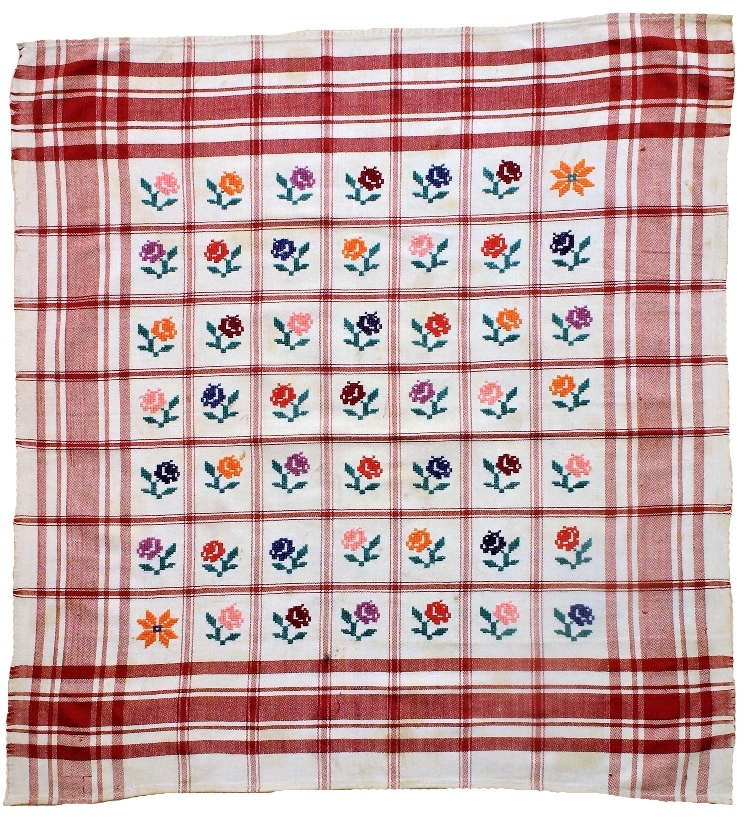 Хуста (handkerchief) belongs to unicameral products, it is a rectangular or square piece of cloth or factory cotton cloth, decorations, as a rule, rich ornament. The width is usually almost 50 see, the length depends on the taste of the hostess, but not more than 60-70 cm.
Хуста (handkerchief) belongs to unicameral products, it is a rectangular or square piece of cloth or factory cotton cloth, decorations, as a rule, rich ornament. The width is usually almost 50 see, the length depends on the taste of the hostess, but not more than 60-70 cm.
New Year and Christmas holidays are typical, that at this time the godparents bring treats to their little godchildren, who do not go or give generously, nor sow. Be sure to tie a scarf (the name "scarf" was used in parallel). Its use is exclusively ritual. In it they wore Easter to the church, apples and honey, in it put "memorial service", when the dead were commemorated in the church.
When they went to funeral dinners, and went with bread, he was wrapped in a handkerchief. It wore "pies" to the godparents, hotels, bread was served on it, inviting to a wedding and welcoming honored guests, bread was wrapped in a handkerchief, sending the newlyweds to the groom's house, it covered the bread on the table. Such a close ritual connection with bread indicates the ancient existence of the kerchief.
The use of the headscarf in various life situations was recorded in his "Diary" of 1717-1767 by Yakiv Markovych.: "My godmother gave me a handkerchief, and I'm red to her ", "I received a letter from my sister from home with the sending of two khustok".
From what chronological depths is the existence of the handkerchief is not known. We see a very similar thing to a handkerchief tucked behind the belt of the Virgin Oranta, the mosaic image of which is placed in the console of the central apse of Sophia of Kyiv.
Decorative compositions depended on the form. For rectangular striped-transverse scheme was used. In the twentieth century, the product itself was made longer and several ornamental stripes were embroidered, than brought the appearance of the handkerchief to the towel. The square shape entails the development of three compositional schemes. One of them is similar to the mentioned composition with two large motifs at the ends. The second - has great motives in the corners, small - between them the pain of the edges and the central motive, as well as framing a strip of ornament around the perimeter. The third composition - the map - probably appeared in the first half of the twentieth century under the influence of weaving. The whole field of scarves is drawn on small cards, which contain decorative motifs - one or more: larger in the center, small - in the corners. There is no doubt, that the striped-transverse composition has very deep roots. We can say about the square scheme, that it already existed in the seventeenth century.
In Chernihiv Polissya, products made in the second half of the twentieth century called khusta are still widely used..
In the collection of the Chernihiv Historical Museum named after VV. Tarnowski are preserved 40 scarf of the middle of the XVIII - middle of the XX centuries from different parts of Chernihiv region. Due to the closure of 2006 year, the Museum of Folk Decorative Art of Chernihiv works are not exhibited, and stored in the vault.
Віра Зайченко. Вишивка Чернігівщини. – 2010. - Rodovid Publishing House.
#collections_of_Chernihiv_Historical_Museum_of_Vasyl_Tarnovsky
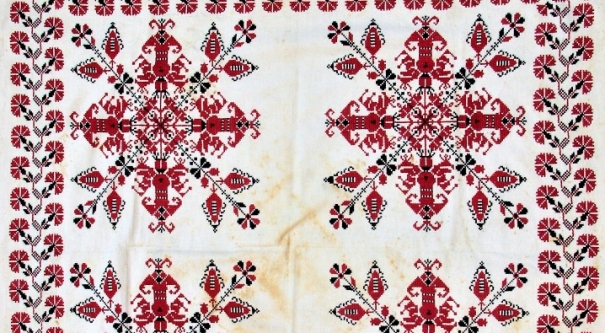


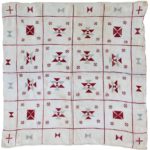
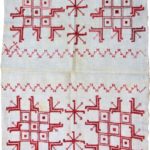
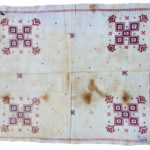





More Stories
Commemoration of the liquidators of the consequences of the accident at the Chernobyl nuclear power plant
Needed, perhaps, God's gift to create beautiful things from clay
Exhibition “In memory of cultural workers...”